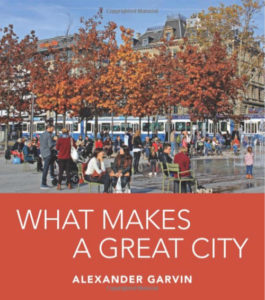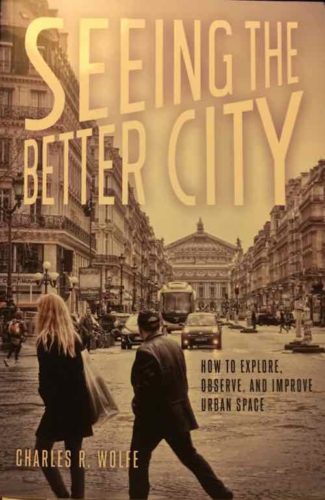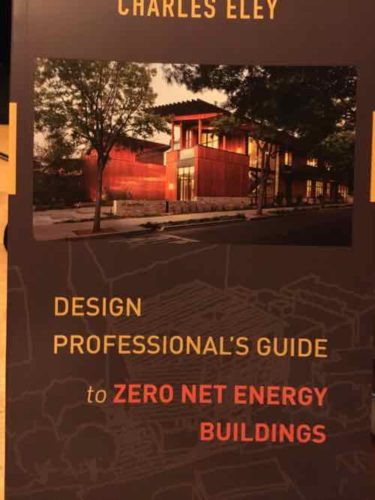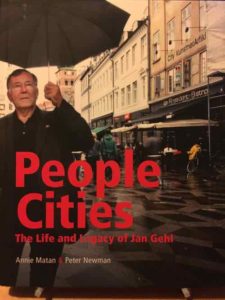 When I saw the author’s name it looked familiar to me, but I searched the last 12 years of blog posts — no mention. Ah, the answer is in his bio:
When I saw the author’s name it looked familiar to me, but I searched the last 12 years of blog posts — no mention. Ah, the answer is in his bio:
Alex Garvin is currently an adjunct professor at the Yale School of Architecture and President and CEO of AGA Public Realm Strategists, Inc., a planning and design firm in New York City that is responsible for the initial master plans for the Atlanta BeltLine as well as other significant public-realm projects throughout the United States. Between 1996 and 2005 he was managing director for planning at NYC2012, the committee to bring the Summer Olympics to New York in 2012. During 2002–2003, he was Vice President for Planning, Design and Development of the Lower Manhattan Development Corporation. Over the last 46 years, he has held prominent positions in five New York City administrations, including Deputy Commissioner of Housing and City Planning Commissioner. He is the author of numerous books including The American City: What Works and What Doesn’t, now in its third edition.
I’ve often referred to my first edition (1996) copy of his book The American City: What Works and What Doesn’t when researching a topic.
From the publisher:
What makes a great city? Not a good city or a functional city but a great city. A city that people admire, learn from, and replicate. City planner and architect Alexander Garvin set out to answer this question by observing cities, largely in North America and Europe, with special attention to Paris, London, New York, and Vienna.
For Garvin, greatness is not just about the most beautiful, convenient, or well-managed city; it isn’t even about any “city.” It is about what people who shape cities can do to make a city great. A great city is not an exquisite, completed artifact. It is a dynamic, constantly changing place that residents and their leaders can reshape to satisfy their demands. While this book does discuss the history, demographic composition, politics, economy, topography, history, layout, architecture, and planning of great cities, it is not about these aspects alone. Most importantly, it is about the interplay between people and public realm, and how they have interacted throughout history to create great cities.
To open the book, Garvin explains that a great public realm attracts and retains the people who make a city great. He describes exactly what the term public realm means, its most important characteristics, as well as providing examples of when and how these characteristics work, or don’t. An entire chapter is devoted to a discussion of how particular components of the public realm (squares in London, parks in Minneapolis, and streets in Madrid) shape people’s daily lives. He concludes with a look at how twenty-first century initiatives in Paris, Houston, Atlanta, Brooklyn, and Toronto are making an already fine public realm even better—initiatives that demonstrate what other cities can do to improve.
What Makes a Great City will help readers understand that any city can be changed for the better and inspire entrepreneurs, public officials, and city residents to do it themselves.
Publisher summaries always sound good, the place to start is the table of contents — does it cover the right subjects:
Preface: What Makes a Great City
Chapter 1: The Importance of the Public Realm
- Defining the Public Realm
- Streets, Squares, and Parks
- Beyond Streets, Squares, and Parks
- Making Cities Great
Chapter 2: The Characteristics of the Public Realm
- Open to Anybody
- Something for Everybody
- Attracting and Retaining Market Demand
- Providing a Framework for Successful Urbanization
- Sustaining a Habitable Environment
- Nurturing and Supporting a Civil Society
Chapter 3: Open to Anybody
- Overwhelmingly Identifiable, Accessible, and Easy to Use
- Plaza Mayor, Salamanca, Spain
- Creating an Identifiable, Accessible, and Easy-to-Use Public Realm
- The Paris Metro
- Federal Center, Chicago
- Piazza del Campo, Siena, Italy
- The Squares of Savannah
- Sixteenth Street, Denver
- Keeping the Public Realm Safe
- Gran Via, Barcelona
- Piet Heinkade, Amsterdam
- The Streets of Paris
- Feeling Comfortable
- Jardin du Palais Royale, Paris
- Commonwealth Avenue, Boston
- Kungstradgarten, Stockholm
- Via dei Condotti, Rome
- Via Aquilante, Gubbio, Italy
- Worth Avenue, Palm Beach
- Levittown, Long Island
- Forever Welcoming
Chapter 4: Something for Everybody
- A Reason to Return Again and Again
- Boulevard des Italiens, Paris
- Jardin du Luxembourg, Paris
- Washington Park, Chicago
- Having Fun
- Playgrounds
- Piazza Navona, Rome
- Animating a Multifunctional Public Realm
- Market Square and PPG Place, Pittsburgh
- A Place for Everything and Everything in Its Place
- Central Park, New York City
- Passeig de Gracia, Barcelona
- Reclaiming Bits of the Public Realm for Public Use
- Plenty of People
Chapter 5: Attracting and Retaining Market Demand
- Using the Public Realm to Trigger Private Development
- Place des Vosges, Paris
- The Revival of the Place des Vosges
- Regent’s Park, London
- Avenue Foch, Paris
- Enlarging the Public Realm to Accommodate a Growing Market
- An Administrative Center for the Modern City of Paris
- North Michigan Avenue, Chicago
- Responding to Diminishing Market Demand by Repositioning the Public Realm
- Kärntner Straße, Vienna
- Bryant Park, New York City
- Continuing Investment
Chapter 6: Providing a Framework for Successful Urbanization
- Alternative Frameworks
- Atlanta
- Dubrovnik, Croatia
- Rome
- St. Petersburg, Russia
- The Paris Street Network
- Ringstrasse, Vienna
- Radio-Concentric Moscow
- Houston’s Highway Rings
- The Manhattan Grid
- Maintaining the Public Realm Framework
- Thirty-Fourth Street, Manhattan
- Determining the Location of Market Activity
Chapter 7: Sustaining a Habitable Environment
- What Does It Take to Sustain a Habitable Environment?
- Eastern Parkway, Brooklyn
- Using the Public Realm to Create a Habitable Environment
- Boston’s Emerald Necklace
- Long Island’s Network of Parks, Beaches, and Parkways
- Reconfiguring the Public Realm to Improve Habitability
- The Public Squares of Portland, Oregon
- New York City’s Greenstreets Program
- Transportation Alternatives that Improve Habitability
- Union Square, San Francisco
- Post Office Square, Boston
- Congestion Pricing in London
- Congestion Targets in Zurich
- An Ever More Habitable Public Realm
- The Chicago Lakeshore
- Reviving the San Antonio River
- Operating the Public Realm
- Park Management in New York City
- An Ever-Improving Public Realm
Chapter 8: Nurturing and Supporting a Civil Society
- The Nurturing Role of the Public Realm
- The Streets of Copenhagen
- Palace Square (Dvortsovaya Ploshchad), St. Petersburg
- Red Square, Moscow
- Ensuring that the Public Realm Continues to Nurture a Civil Society
- The Public Realm as a Setting for Self-Expression
Chapter 9: Using the Public Realm to Shape Everyday Life
- Whose Realm Is It?
- Determining the Daily Life of a City
- The Squares of London
- The Minneapolis Park System
- The Madrid Miracle
- The Key to Greatness
Chapter 10: Creating a Public Realm for the Twenty-First Century
-
The Patient Search for a Better Tomorrow
- Place de la République, Paris
- Post Oak Boulevard in the Uptown District of Houston
- Brooklyn Bridge Park
- Atlanta’s BeltLine Emerald Necklace
- Waterfront Toronto
-
What Makes a City Great
In my view this book covers the right topics, including market demand. In chapter 5 sections discuss the public realm in both growing & shrinking market demand. The public realm can impact market demand.
This book can be ordered through Left Bank Books, Amazon, or your favorite bookseller.
— Steve Patterson
 The latest book I have really speaks to my philosophy about personal observation, I generally don’t write about something until I experience it in person.
The latest book I have really speaks to my philosophy about personal observation, I generally don’t write about something until I experience it in person.


